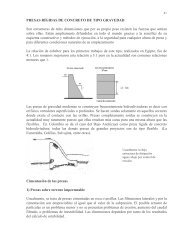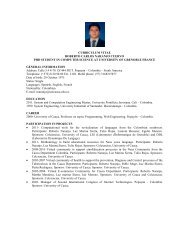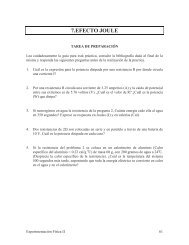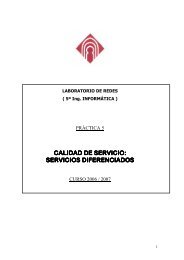Advice for the Project Management Professional (PMP)
Advice for the Project Management Professional (PMP)
Advice for the Project Management Professional (PMP)
You also want an ePaper? Increase the reach of your titles
YUMPU automatically turns print PDFs into web optimized ePapers that Google loves.
Licensed to:<br />
resource leveling — A technique <strong>for</strong> resolving<br />
resource conflicts by delaying tasks.<br />
resource loading — The amount of individual<br />
resources an existing schedule requires during<br />
specific time periods.<br />
responsibility assignment matrix (RAM) —A<br />
matrix that maps <strong>the</strong> work of <strong>the</strong> project as<br />
described in <strong>the</strong> WBS to <strong>the</strong> people responsible<br />
<strong>for</strong> per<strong>for</strong>ming <strong>the</strong> work.<br />
return on investment (ROI) — (Benefits minus<br />
costs) divided by costs.<br />
risk — An uncertainty that can have a negative<br />
or positive effect on meeting project objectives.<br />
risk events — The specific, uncertain events<br />
that may occur to <strong>the</strong> detriment or enhancement<br />
of <strong>the</strong> project.<br />
risk register — A document that contains<br />
results of various risk management processes,<br />
often displayed in a table or spreadsheet<br />
<strong>for</strong>mat.<br />
root cause — The real or underlying reason a<br />
problem occurs.<br />
scatter diagram — A diagram that helps show<br />
if <strong>the</strong>re is a relationship between two variables.<br />
scope baseline — The approved project scope<br />
statement and its associated WBS and WBS<br />
dictionary.<br />
scope creep — The tendency <strong>for</strong> project scope<br />
to continually increase.<br />
scope management plan — A document that<br />
includes descriptions of how <strong>the</strong> team will prepare<br />
<strong>the</strong> project scope statement, create <strong>the</strong><br />
WBS, verify completion of <strong>the</strong> project deliverables,<br />
and control requests <strong>for</strong> changes to <strong>the</strong><br />
project scope.<br />
scope statement — A document used to<br />
develop and confirm a common understanding<br />
of <strong>the</strong> project scope.<br />
scope verification — The <strong>for</strong>mal acceptance of<br />
<strong>the</strong> completed project scope by <strong>the</strong> customer<br />
or designated stakeholders.<br />
short list — A list of <strong>the</strong> top three to five suppliers<br />
created to reduce <strong>the</strong> work involved in<br />
selecting a source.<br />
Six Sigma — A comprehensive and flexible<br />
system <strong>for</strong> achieving, sustaining, and maximizing<br />
business success; uniquely driven by close<br />
understanding of customer needs, disciplined<br />
use of facts, data, and statistical analysis, and<br />
diligent attention to managing, improving, and<br />
reinventing business processes.<br />
slack or float — The amount of time an activity<br />
may be delayed without delaying a succeeding<br />
activity or <strong>the</strong> project finish date.<br />
slipped milestone — A milestone activity that<br />
was actually completed later than originally<br />
planned.<br />
smoothing mode — The conflict-handling<br />
mode that de-emphasizes or avoids areas of<br />
differences and emphasizes areas of agreement.<br />
staffing management plan — A plan that<br />
describes when and how people will be added<br />
to and taken off of a project.<br />
stakeholder analysis — A document that provides<br />
in<strong>for</strong>mation on key stakeholders to help<br />
manage relationships with <strong>the</strong>m.<br />
stakeholders — The people involved in or<br />
affected by project activities.<br />
standard — A document that describes best<br />
practices <strong>for</strong> what should be done to manage a<br />
project.<br />
status reports — The reports that describe<br />
where <strong>the</strong> project stands at a specific point<br />
in time.<br />
strategic planning — The process of determining<br />
long-term objectives by analyzing <strong>the</strong><br />
strengths and weaknesses of an organization,<br />
studying opportunities and threats in <strong>the</strong> business<br />
environment, predicting future trends,<br />
and projecting <strong>the</strong> need <strong>for</strong> new products and<br />
services.<br />
SWOT analysis — Analyzing Strengths,<br />
Weaknesses, Opportunities, and Threats.<br />
Copyright 2009 Cengage Learning. All Rights Reserved.<br />
May not be copied, scanned, or duplicated, in whole or in part.<br />
443<br />
Glossary

















